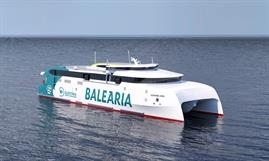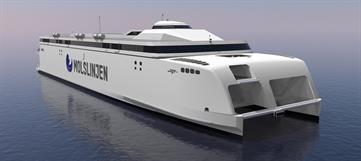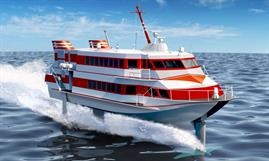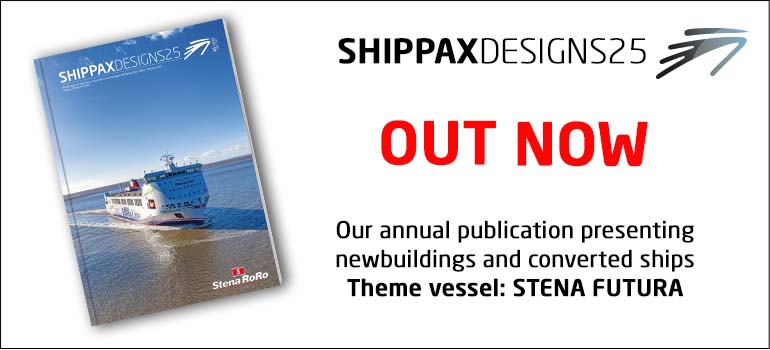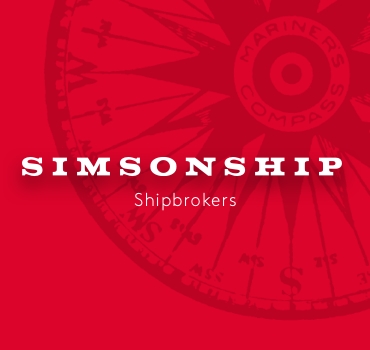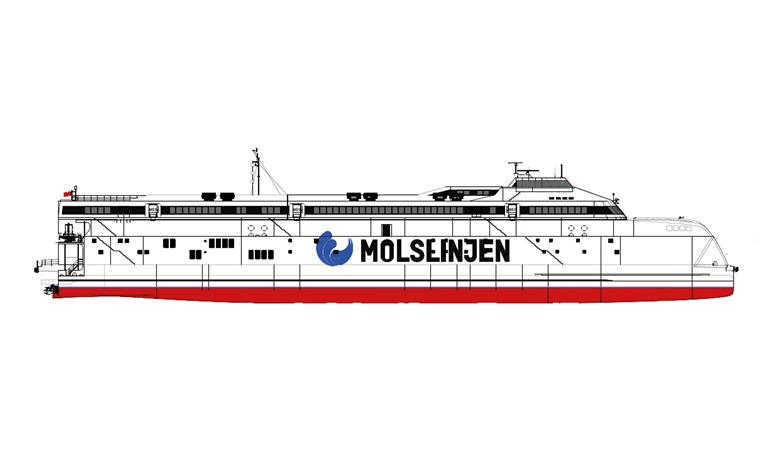
Molslinjen electrifies giant catamarans on the Kattegat
High-speedThe owners behind Molslinjen, Nordic Ferry Infrastructure, have placed a multi-billion (DKK) order for two battery-electric high-speed catamarans to serve the route across the Kattegat – marking the launch of the world’s largest electrification project at sea. The ferries will be built by Australian shipbuilder Incat, and a third vessel is also expected to join the fleet in Denmark during 2027 and 2028.
A third ferry is also in the planning stages, with discussions ongoing with multiple shipyards capable of delivering a vessel identical to the first two. If all three ferries are realized, the Kattegat route will become the world’s largest electrification project at sea to date. The first of the three ferries is expected to arrive in Danish waters around the turn of the year 2027–2028.
“For many years, Molslinjen has been critical infrastructure, creating cohesion by forming a floating bridge between Jutland and Zealand. Now, we’re making that floating bridge significantly greener – setting a milestone in the green transition for ferry operations and for Denmark,” says Carsten Jensen, CEO of Nordic Ferry Infrastructure, which owns Molslinjen and the Norwegian ferry operator Torghatten.
Each of the three ferries will measure 129 metres in length and 30.5 metres in width, accommodating up to 1,483 passengers and 500 cars. This is 11 percent larger than Bornholmslinjen’s EXPRESS 5, which – by vehicle capacity – is currently considered the world’s largest catamaran. The addition of these new vessels will increase total capacity for cars and passengers on the Kattegat by more than 25 percent.
Each ferry will be equipped with battery packs of 45 MWh, powering the ships to speeds of over 40 knots.
“This is a massive undertaking, involving not just the three ferries but also extensive land-based infrastructure projects and energy storage systems for the new ships,” says Kristian Durhuus, CEO of Molslinjen.
The total investment for the three ferries and their associated onshore infrastructure is expected to be around DKK 3.5 billion.
Molslinjen’s fast ferries were specifically mentioned in the Danish green tax reform – a package of political initiatives aimed at reducing greenhouse gas emissions and accelerating the green transition.
As a result, Molslinjen has now applied for support from the government’s green funding program to help finance the electrification of its Kattegat operations. The possibility of state support has been the decisive factor behind the company’s decision to place the order.
“We now have two and a half years to get ready for full electric operation on the Kattegat. It’s a fantastic milestone for our company. We are among Denmark’s five largest CO2 emitters, and with support from the fund, we and the government now have a chance to remove 132,000 tonnes of CO2 emissions from Denmark’s climate footprint each year,” says Kristian Durhuus.
The ferries will be able to charge at both Aarhus and Odden harbours. When plugged in, a single catamaran will charge with 15 kV AC at 55,000 kW for 30 minutes – receiving an average of 25,000 kWh of energy before its next journey. That’s enough to power an electric car for a 150,000-kilometre drive on a single charge.
© Shippax
jul 22 2025
Most read
MSC Cruises and Meyer Werft sign landmark agreement for up to six next-generation “New Frontier” class cruise ships
dec 15 2025


